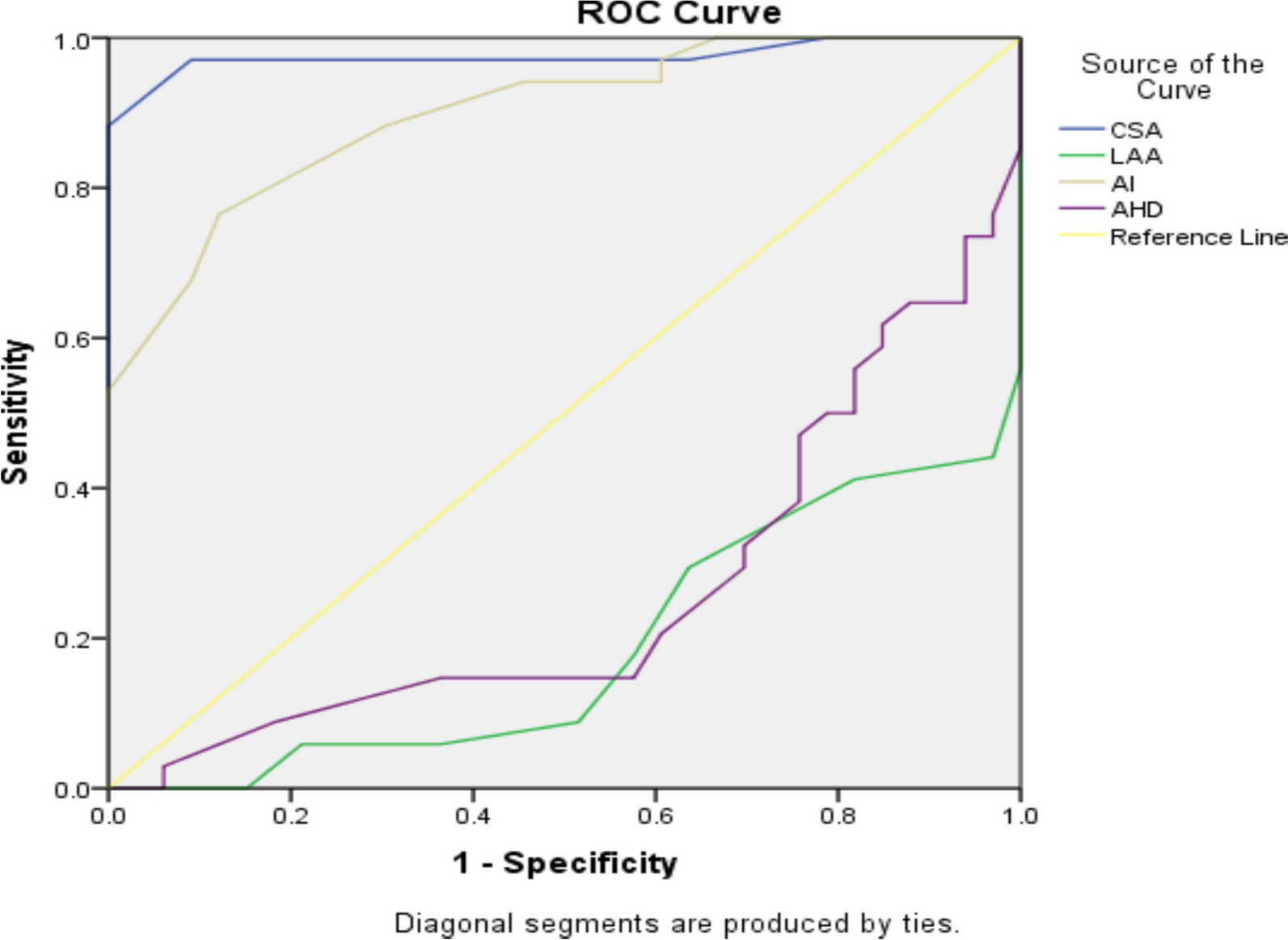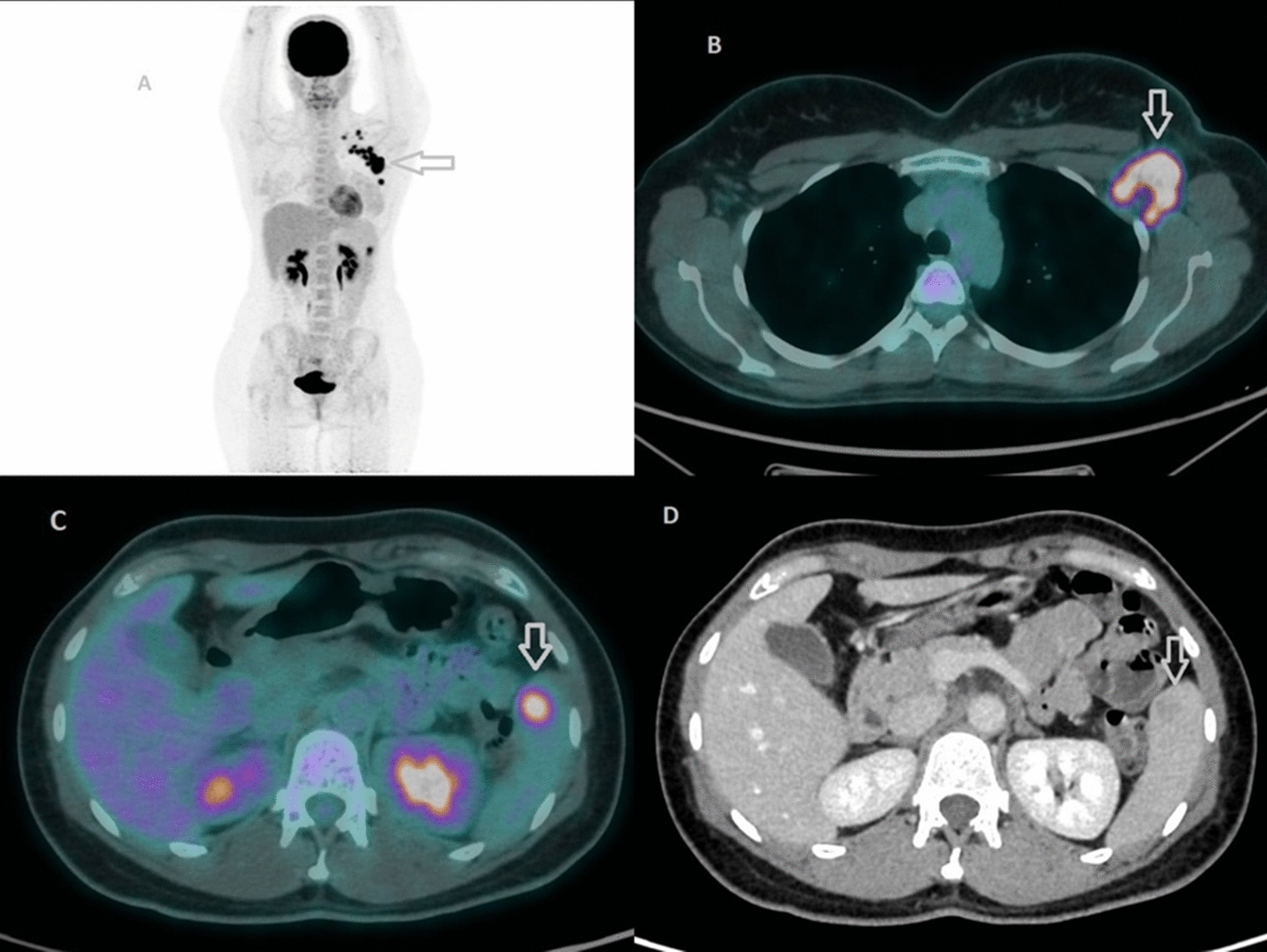Introduction
The coronavirus disease 2019 (COVID-19) was declared by the World Health Organization (WHO) as a pandemic on March 11, 2020. It poses a serious threat to human health and remains a major public health challenge worldwide.1 COVID-19…

The coronavirus disease 2019 (COVID-19) was declared by the World Health Organization (WHO) as a pandemic on March 11, 2020. It poses a serious threat to human health and remains a major public health challenge worldwide.1 COVID-19…

The so-called London Underground mosquito was long thought to be an example of modern or observable evolution [Getty]
A mosquito long thought to have evolved in the tunnels of the London Underground actually originated more than a thousand…

TL;DR: Scan, OCR, edit, sign, and share from your phone forever with a lifetime subscription to iScanner for $24.99 with promo code SCAN through Nov. 2.
If your “scanner” is a dimly lit photo…

The study included 67 participants with an average age of 41.58 years (SD = 16.77). The age of participants ranged from 18 to 69 years, with a median age of 44 years. The interquartile range (IQR) revealed that 25% of the participants were aged 23 years or younger, while 75% were aged 57 years or younger, indicating a wide distribution of age among the participants. The gender distribution revealed that 59.7% of the patients were male (n = 40), while 40.3% were female (n = 27). Regarding the side affected, the majority of the patients had the right side affected, accounting for 53.7% (n = 36), whereas 46.3% (n = 31) had the left side affected. When categorized based on the type of tear, 49.3% of the patients were in the control group (n = 33), 26.9% had a partial tear (n = 18), and 23.9% had a full tear (n = 16) Table 1.
The analysis revealed a strong positive correlation between the Critical Shoulder Angle (CSA) and the presence of RCT (r = 0.827, P < .0001), indicating that higher CSA values were associated with a higher likelihood of RCT. Similarly, the Acromial Index (AI) also showed a significant positive correlation (r = 0.695, P < .0001). Conversely, the Lateral Acromial Angle (LAA) and Acromiohumeral Distance (AHD) were negatively correlated with the presence of RCT (r = − 0.542, P < .0001; r = − 0.413, P = .001) respectively, suggesting that lower values of these parameters were associated with an increased risk of RCT Table 2.
The comparative analysis of shoulder parameters between the Control and Rotator Cuff Tear (RCT) group. For the Critical Shoulder Angle (CSA), the Control group demonstrated a mean value of 31.52 ± 2.14, with a median of 32.00 and a range of 28 to 35. In contrast, the RCT group exhibited a significantly higher mean CSA of 37.12 ± 2.27, with a median of 37.00 and a range of 30 to 43. The Mann–Whitney U test revealed a highly significant difference between the groups (P < 0.001, Z = − 6.717).
Regarding the Lateral Acromial Angle (LAA), the Control group had a mean of 82.82 ± 3.47 and a median of 83.00, with values ranging from 78 to 91. The RCT group, however, had a lower mean LAA of 77.65 ± 4.35, with a median of 78.00 and a range of 70 to 86. This difference was also statistically significant (P < 0.001, Z = − 4.405).
The Acromial Index (AI) was higher in the RCT group, with a mean of 0.702 ± 0.053 and a median of 0.690, compared to the Control group’s mean of 0.617 ± 0.046 and a median of 0.630. The range for AI in the Control group was 0.52 to 0.68, while in the RCT group, it ranged from 0.60 to 0.80. This difference was statistically significant, with a p-value of <0.001 (Z = − 5.644).
Lastly, the Acromiohumeral Distance (AHD) was found to be significantly lower in the RCT group, with a mean of 6.22 ± 1.54 and a median of 6.40, compared to the Control group’s mean of 7.45 ± 1.09 and a median of 7.70. The AHD ranged from 5.00 to 8.90 in the Control group and from 2.50 to 8.60 in the RCT group. The difference between the groups was statistically significant (P = 0.001, Z = − 3.357).
These findings indicate significant variations in shoulder parameters between individuals with rotator cuff tears and those without, suggesting that rotator cuff tears were associated with distinct alterations in anatomical measurements Table 3.
The effectiveness of various shoulder parameters in determining the presence of rotator cuff tears (RCT) was assessed using the Area Under the Curve (AUC) from receiver operating characteristic (ROC) analysis. The Critical Shoulder Angle (CSA) exhibited the highest AUC of 0.975, with a 95% confidence interval (CI) ranging from 0.933 to 1.000, and a standard error (SE) of 0.021. This AUC indicated an exceptional ability of CSA to discriminate between individuals with and without RCT, with the p-value of .000 confirming statistical significance.
Critical shoulder angle (CSA) at 34 degrees: Sensitivity: 0.971 (97.1%): At a cut-off value of 34 degrees, the CSA correctly identified 97.1% of individuals with the condition (true positives). This high sensitivity implied that CSA was highly effective in detecting the condition, minimizing the number of false negatives. Specificity: 0.909 (90.9%): The specificity of 90.9% indicated that the CSA correctly identified 90.9% of individuals without the condition (true negatives). This demonstrated that the CSA had a good ability to correctly exclude those who did not have the condition, reducing false positives.
The Acromial Index (AI) also demonstrated strong discriminative power with an AUC of 0.900 (95% CI 0.829-0.971) and a SE of 0.036. The significance of this parameter is supported by a p-value of 0.000, suggesting it was a highly effective metric for detecting RCT. Acromial Index (AI) at 0.66: Sensitivity: 0.765 (76.5%): At a cut-off of 0.66, AI correctly identified 76.5% of individuals with the condition Specificity: 0.879 (87.9%): The specificity of 87.9% showed that AI effectively identified 87.9% of those without the condition.
In contrast, the Lateral Acromial Angle (LAA) had a markedly lower AUC of 0.188 (95% CI 0.087-0.289) with a SE of 0.052. Despite the statistically significant p-value of .000, this low AUC reflected a poor ability of LAA to differentiate between RCT and control groups, indicating limited utility in clinical settings.
Similarly, the Acromiohumeral Distance (AHD) showed an AUC of 0.262 (95% CI 0.141-0.382) with a SE of 0.061, and a p-value of .001. Although statistically significant, the low AUC suggested that AHD was not a strong predictor of RCT, demonstrating limited effectiveness compared to CSA and AI. Overall, CSA and AI were identified as the most effective parameters for determining the presence of rotator cuff tears, while LAA and AHD were less effective Table 4.
CSA (Critical shoulder angle): The mean CSA for the control group was 31.52 ± 2.14 degrees, with a median of 32.00 (range 28–35). The partial tear group showed a significantly higher mean CSA of 36.33 ± 2.25 degrees and a median of 36.00 (range 30–41). The full tear group had the highest mean CSA at 38.00 ± 2.00 degrees, with a median of 37.50 (range 36–43). The Kruskal–Wallis test revealed a statistically significant difference between groups (P = 0.000, KW = 47.210), indicating that CSA values increased with the severity of rotator cuff tear.
LAA (Lateral acromial angle): The mean LAA for the control group was 82.82 ± 3.47 degrees, with a median of 83.00 (range 78–91). The partial tear group had a lower mean LAA of 77.44 ± 4.23 degrees and a median of 78.00 (range 70–86). The full tear group showed a similar mean LAA of 77.88 ± 4.60 degrees, with a median of 78.50 (range 70–86). The Kruskal–Wallis test indicated a significant difference among groups (P = 0.000, KW = 19.584), suggesting a reduction in LAA with the severity of rotator cuff tear.
AI (Acromial index): The control group had a mean AI of 0.62 ± 0.05, with a median of 0.63 (range 0.52–0.68). The partial tear group showed a higher mean AI of 0.70 ± 0.05 and a median of 0.70 (range 0.61–0.80). The full tear group exhibited the highest mean AI of 0.71 ± 0.06, with a median of 0.69 (range 0.60–0.80). The Kruskal–Wallis test results showed a significant difference (P = 0.000, KW = 31.951), indicating an increase in AI with the severity of the tear.
AHD (Acromiohumeral distance): For the control group, the mean AHD is 7.45 ± 1.09 mm, with a median of 7.70 (range 5.00–8.90). The partial tear group showed a slightly lower mean AHD of 7.19 ± 0.86 mm and a median of 7.15 (range 5.50–8.60). The full tear group had the lowest mean AHD at 5.13 ± 1.41 mm, with a median of 5.10 (range 2.50–8.40). The Kruskal–Wallis test showed a significant difference (P = 0.000, KW = 23.675), suggested a decrease in AHD with increasing severity of the rotator cuff tear. In summary, the analysis using the Kruskal–Wallis test showed significant differences in all four shoulder parameters (CSA, LAA, AI, and AHD) among the different tear size subgroups. Specifically, the CSA and AI values tended to increase with the severity of the tear, while the AHD and LAA decreased. These findings highlighted the impact of tear severity on shoulder parameters Table 5.
CSA (Critical shoulder angle): Control vs Partial tear: The AUC was 0.953 with a 95% confidence interval of 0.876 to 1.000, and a p-value of 0.000. This indicated excellent discriminative ability for CSA in distinguishing between control and partial tear groups. Control versus Full Tear: The AUC was 1.000 with a 95% confidence interval of 1.000 to 1.000, and a p-value of 0.000. This perfect AUC suggests CSA is highly effective in distinguishing between control and full tear groups. Partial vs Full Tear: The AUC is 0.738 with a 95% confidence interval of 0.570 to 0.906, and a p-value of 0.000. This indicates good discriminative ability for CSA in differentiating between partial and full tear groups.
AI (Acromial index): Control vs Partial tear: The AUC was 0.890 with a 95% confidence interval of 0.796 to 0.983, and a p-value of 0.000. This suggested that AI was effective in differentiating between control and partial tear groups. Control vs Full Tear: The AUC was 0.912 with a 95% confidence interval of 0.822 to 1.000, and a p-value of 0.000. This indicated that AI was highly effective in distinguishing between control and full tear groups. Partial vs Full Tear: The AUC was 0.540 with a 95% confidence interval of 0.342 to 0.738, and a p-value of 0.692. This AUC suggested poor discriminative ability of AI in differentiating between partial and full tear groups.
LAA (Lateral acromial angle): Control vs Partial tear: The AUC was 0.166 with a 95% confidence interval of 0.044 to 0.287, and a p-value of 0.000. This very low AUC indicated poor performance of LAA in distinguishing between control and partial tear groups. Control vs Full Tear: The AUC was 0.213 with a 95% confidence interval of 0.072 to 0.354, and a p-value of 0.001. This low AUC suggested that LAA was not effective in distinguishing between control and full tear groups. Partial vs Full Tear: The AUC was 0.538 with a 95% confidence interval of 0.340 to 0.737, and a p-value of 0.704. This AUC suggested poor discriminative ability of LAA in differentiating between partial and full tear groups.
AHD (Acromiohumeral distance): Control vs Partial tear: The AUC was 0.396 with a 95% confidence interval of 0.234 to 0.559, and a p-value of 0.225. This indicated poor discriminative ability of AHD in distinguishing between control and partial tear groups. Control vs Full Tear: The AUC was 0.110 with a 95% confidence interval of 0.000 to 0.221, and a p-value of 0.000. This very low AUC suggested that AHD was not effective in differentiating between control and full tear groups. Partial vs Full Tear: The AUC was 0.085 with a 95% confidence interval of 0.000 to 0.198, and a p-value of 0.000. This very low AUC indicated poor performance of AHD in distinguishing between partial and full tear groups Table 6.

In this case report, we highlight the dual-edged utility of [18F]FDG PET/CT in the management of breast cancer, illustrating both its strengths in staging and response assessment and its pitfalls related to specificity. The role of [18F]FDG PET/CT in breast cancer has been increasingly recognized, particularly for phenotypes characterized by high glycolytic activity—namely triple-negative and “HER2-enriched” subtypes [1, 5, 6]. The Phergain study prospectively demonstrated that changes in [18F]FDG uptake during neoadjuvant therapy can guide adaptive treatment strategies, improving pathological complete response rates in HER2-positive disease [7]. This study underscored the prognostic importance of metabolic response on interim PET and validated [18F]FDG PET/CT as a decision-making tool during treatment.
However, [18F]FDG PET/CT is not without limitations. Focal FDG-avid splenic lesions encompass a wide differential, including benign vascular entities such as cavernous or capillary hemangiomas, sclerosing angiomatoid nodular transformation (SANT), and less common vascular neoplasms like hemangioendothelioma [8, 9]. Other considerations include inflammatory or granulomatous disorders (e.g., sarcoidosis, tuberculosis, other mycobacterial or fungal infections), infectious abscess, hematologic involvement by lymphoma or leukemia, and metastatic disease. Several benign entities (notably SANT and atypical hemangiomas) can show variable FDG uptake and overlapping cross-sectional features, which complicate noninvasive diagnosis [10, 11]. Histopathology remains the reference standard for definitive diagnosis, but percutaneous splenic biopsy carries bleeding and sampling-error risks and may be impractical for small lesions—therefore, tailored integration of imaging features, clinical context, and multidisciplinary review is often required when tissue is not available.
A major drawback of [18F]FDG PET/CT is its limited specificity. [18F]FDG uptake is not tumor‐specific, and many benign processes—including inflammation, infection, and vascular lesions—can exhibit significant tracer accumulation. Large retrospective series and case reviews have similarly emphasized that splenic involvement by breast cancer is an uncommon event, with a pooled prevalence well below 1% across thousands of PET/CT studies [12, 13]. Consequently, the evidence of an FDG-avid splenic nodule in a breast cancer patient almost always prompts consideration of benign etiologies, with vascular anomalies such as hemangiomas ranking high on the differential.
In this context, MRI and contrast CT provide complementary morphologic and enhancement information to PET metabolic data. Typical cavernous hemangiomas usually appear markedly T2-hyperintense and demonstrate peripheral nodular enhancement with progressive centripetal fill-in on delayed phases (CT or MRI), while they may be variably FDG-avid [14]. SANT, although rare, often shows a characteristic spoke-wheel or star-shaped enhancement with a central fibrous scar and persistent delayed enhancement. In addition, on MRI, SANT may be heterogeneous with lower T2 signal centrally [15]. On PET/CT, both SANT and atypical vascular lesions can show increased [18F]FDG uptake, limiting specificity [10, 11]. Thus, enhancement pattern, diffusion behavior, and clinical context are the most useful MRI/CT discriminators, while PET adds sensitivity for metabolic activity but not reliable lesion-type specificity. In this regard, quantitative PET-derived parameters may help in distinguishing benign from malignant lesions. In particular, an SUV threshold of 2.3 has been reported to differentiate benign from malignant lesions, although this finding has not been validated in larger cohorts [8]. In our patient, in fact, the increased and focal tracer uptake (SUVmax 6.5) in the splenic lesion was misleading, as it suggested a neoplastic rather than a benign origin.
Our patient’s baseline staging PET/CT revealed an isolated hypermetabolic splenic lesion (SUVmax 6.5) with corresponding CT findings of a 16 mm hypodense nodule possessing a central low-density core and peripheral rim enhancement—features that are often worrisome for metastasis. Given the uncommon nature of splenic metastases in breast cancer, we pursued multimodal imaging. MRI characterization demonstrated no diffusion restriction and progressive contrast filling on delayed sequences, radiologically favoring an atypical hemangioma. Indeed, focal [18F]FDG uptake in atypical hemangiomas has been documented in both vertebral and hepatic locations, further complicating interpretation [16, 17]. In these reports, benign vascular tumors displayed intense [18F]FDG avidity akin to malignant lesions, likely reflecting the high endothelial cell turnover or inflammatory milieu within the lesion. What made our case particularly challenging was the combination of intense [18F]FDG uptake with CT features mimicking metastatic disease—a presentation that even experienced observers found disconcerting.
The therapeutic course provided an opportunity to further clarify the lesion’s nature. Following the first six cycles of neoadjuvant carboplatin, docetaxel, pertuzumab, and trastuzumab, repeat PET/CT demonstrated complete metabolic resolution of the splenic focus alongside reduction of the nodule to 5 mm on CT and preserved benign imaging characteristics on MRI. Such volume reduction of benign splenic lesions post‐therapy has been sporadically noted in the literature: one case series reported shrinkage of a splenic hemangioma following systemic chemotherapy for lymphoma [18]. However, to our knowledge, this is the first documented case of an atypical hemangioma in the spleen of a breast cancer patient evaluated in a true multimodal fashion—PET, CT, and MRI—both before and after neoadjuvant chemotherapy, with a demonstrated complete metabolic response.
The observed treatment-associated involution of the splenic lesion could be attributed to non‐specific effects of cytotoxic and targeted therapies on the vascular endothelium, inflammatory stroma, or associated macrophages within the hemangioma [19]. Such phenomena underscore the necessity of caution when interpreting post-therapy reductions in size or metabolic activity, as benign lesions may mimic true tumor response. In our patient, multidisciplinary review—bringing together nuclear medicine physicians, radiologists, oncologists, and surgeons—was pivotal in integrating imaging findings with clinical context, thereby avoiding overtreatment based on a false-positive PET result.
Despite these insights, several limitations must be acknowledged. First, the diagnosis of atypical hemangioma remains presumptive, as histologic confirmation was not available. Although percutaneous biopsy of small splenic lesions carries risks of hemorrhage and sampling error, tissue diagnosis remains the gold standard. Second, while [18F]FDG PET/CT remains widely accessible, its lack of specificity in differentiating benign from malignant vascular splenic lesions suggests a potential role for more selective radiotracers. Novel agents such as fibroblast activation protein inhibitor (FAPI) analogues have demonstrated low-background splenic uptake and high tumor-to-background ratios in breast cancer, offering promise for improved specificity [20, 21]. Preliminary studies of HER2-targeted agents labeled with positron emitters (e.g., 89Zr-trastuzumab) have also shown utility in assessing HER2 expression in metastatic lesions while sparing benign tissues [22]. These targeted tracers could potentially reduce false-positive findings in the spleen by exploiting receptor-based uptake rather than glycolytic activity alone.
Moreover, advanced MRI techniques—such as dynamic contrast-enhanced perfusion imaging, diffusion tensor imaging, and MR elastography—may provide additional tissue characterization metrics to distinguish benign vascular anomalies from metastatic deposits. Radiomics and machine learning approaches using multiparametric MRI and PET features may further refine diagnostic accuracy [23].

Malala Yousafzai received the Nobel Peace Prize in 2014 when she was 17.
…

Samsung has one of the biggest product line ups of any tech brand, yet when it comes to design, it’s consistently seen as an “also-ran.” While other companies have forged distinctive and instantly recognizable design languages, such as…